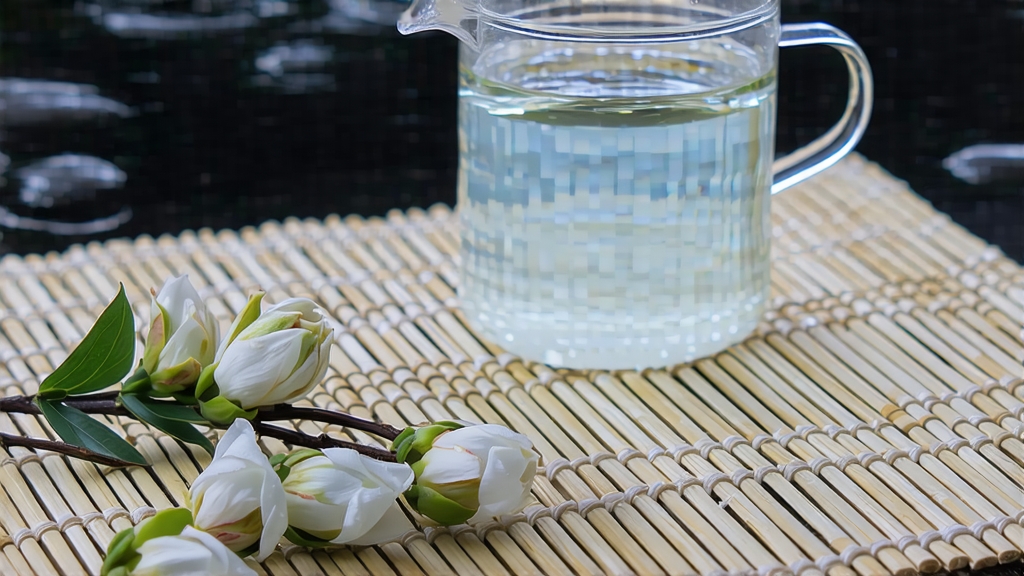
If green tea is the exuberant youth of Chinese tea culture and pu-erh its contemplative elder, then white tea is the quiet poet who arrives at dusk, leaving only a faint trace of moonlight on the sleeve. Among the three canonical grades of white tea—Silver Needle (Bai Hao Yin Zhen), White Peony (Bai Mu Dan), and Shou Mei—Silver Needle stands apart as the most aristocratic, composed solely of unopened buds plucked for a few fleeting mornings each early spring. To understand China’s tea imagination, one must follow these silvery crescent-shaped buds back to their misty cradle in northern Fujian, listen to the stories carried on their microscopic white down, and learn why a tea so delicate can age into a dark, honeyed liquor that fetches prices higher than Grand Cru Burgundy.
-
Historical whispers
The first verifiable record of “white tea” appears in Song dynasty treatises (960-1279 CE), yet those texts describe a compressed cake of young leaves and buds steamed and pressed for court tribute, a production method closer to Tang-dynasty cake tea than to today’s sun-withered loose leaf. The contemporary concept of yinzhen—literally “silver needle”—surfaced during the late Ming and early Qing when loose-leaf infusion replaced whisked powders. Coastal Fujian’s Fuding and Zhenghe counties, blessed with a maritime monsoon climate, gradually perfected the minimalist craft that preserves the bud’s original enzymes. By the 1790s, Silver Needle was already floating down the Min River to the treaty port of Fuzhou, then across the South China Sea to Singapore and London, where Victorian apothecaries marketed it as “a gentle alternative to Assam for the nervous constitution.” In 1891, a small chest of Fuding Silver Needle won a gold medal at the Melbourne International Exhibition, sealing its global reputation. Yet fame also brought imitation; buds from Yunnan, Guizhou, even Vietnam were passed off as Fujian yinzhen, forcing the Qing maritime customs to issue the first known certificates of origin for any Chinese tea. -
Terroir: why the bud remembers the mountain
Authentic Silver Needle is now protected under China’s Geographic Indication system to two core micro-regions:- Fuding Dabai tea trees growing at 200-800 m on red granitic soils, where cold nights slow oxidation and thicken the bud’s cuticle.
- Zhenghe Dabai tea trees planted on slightly higher, more humid slopes where afternoon fog extends the withering window.
The bud itself is a chemical archive: downy trichomes store terpene alcohols such as linalool and geraniol, precursors to the tea’s signature orchid-lilac aroma. Because the bud is plucked before the first true leaf unfurls, polyphenol oxidase activity remains low, yielding a pale liquor yet paradoxically allowing decades of post-fermentative evolution if the tea is stored below 30 °C and 60 % relative humidity.
-
Plucking: the silent lottery
Only three to five days each mid-March meet the criteria: morning temperature 14-19 °C, relative humidity 75-85 %, no frontal rain. Experienced pickers use thumbnail, not blade, to avoid the invisible bruise that would oxidize into an orange blemish. The ideal bud weighs 0.3-0.5 g and stands 2.5-3 cm—shorter buds lack aroma, longer ones contain hidden leaves that darken the cup. A skilled picker gathers just 500 g of fresh buds per hour; five kilograms are needed for one kilogram of finished tea, translating into roughly 18,000 buds. -
Craft: doing less is doing more
Unlike green tea, Silver Needle is never pan-fired or rolled. The traditional recipe lists only two verbs: wither and dry. Yet within those verbs lies a choreography of micro-decisions.
Step 1: Outdoor withering (kuiqing)
Fresh buds are spread on bamboo trays called shaiqingbei and left under a March sun so gentle that skin feels no burn. Every fifteen minutes the tea master lifts a tray waist-high and rotates it 180° so that each bud receives identical photonic stress, initiating the enzymatic pathway that converts all-trans-violaxanthin into β-damascone, the compound responsible for the honeyed apricot note found in aged Silver Needle.
Step 2: Indoor withering (